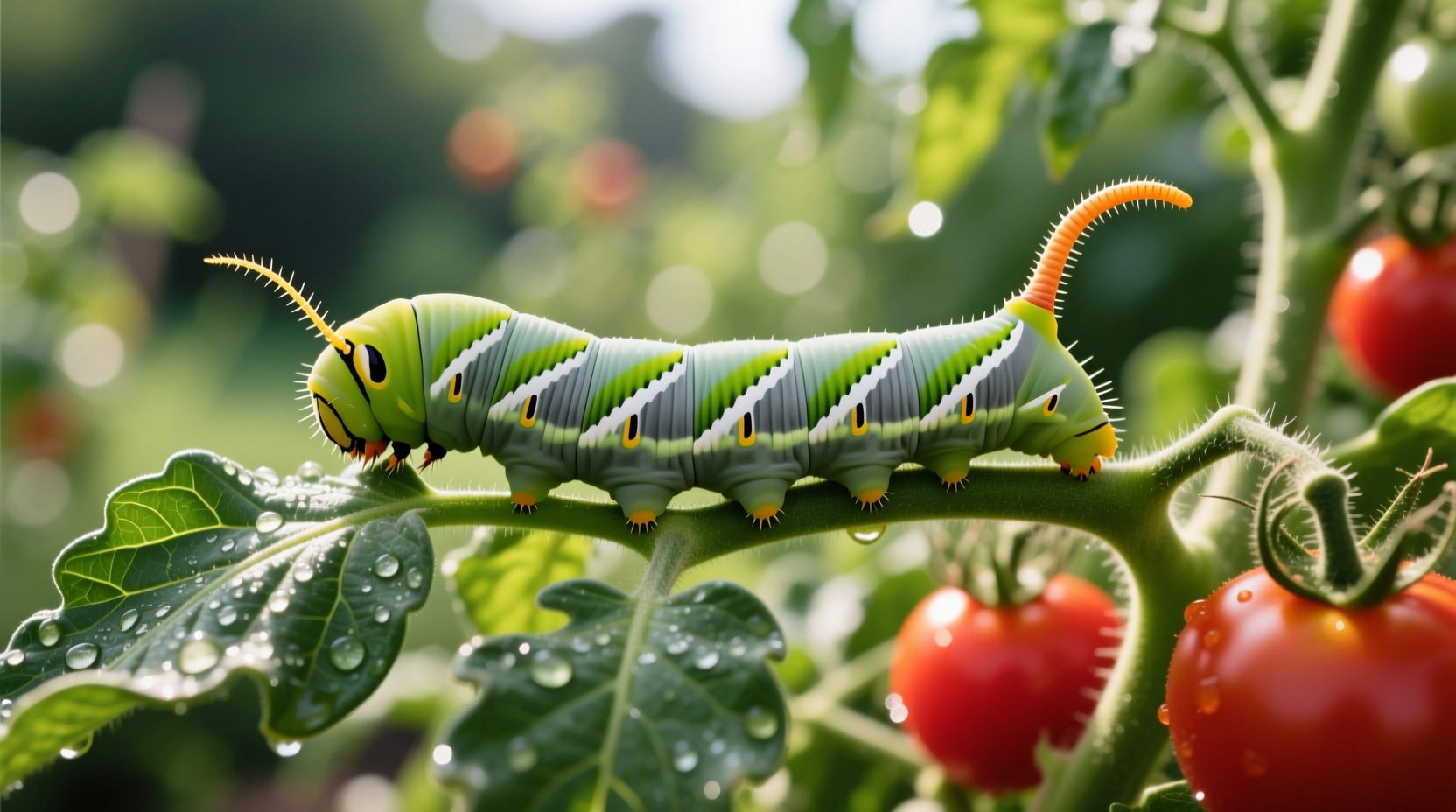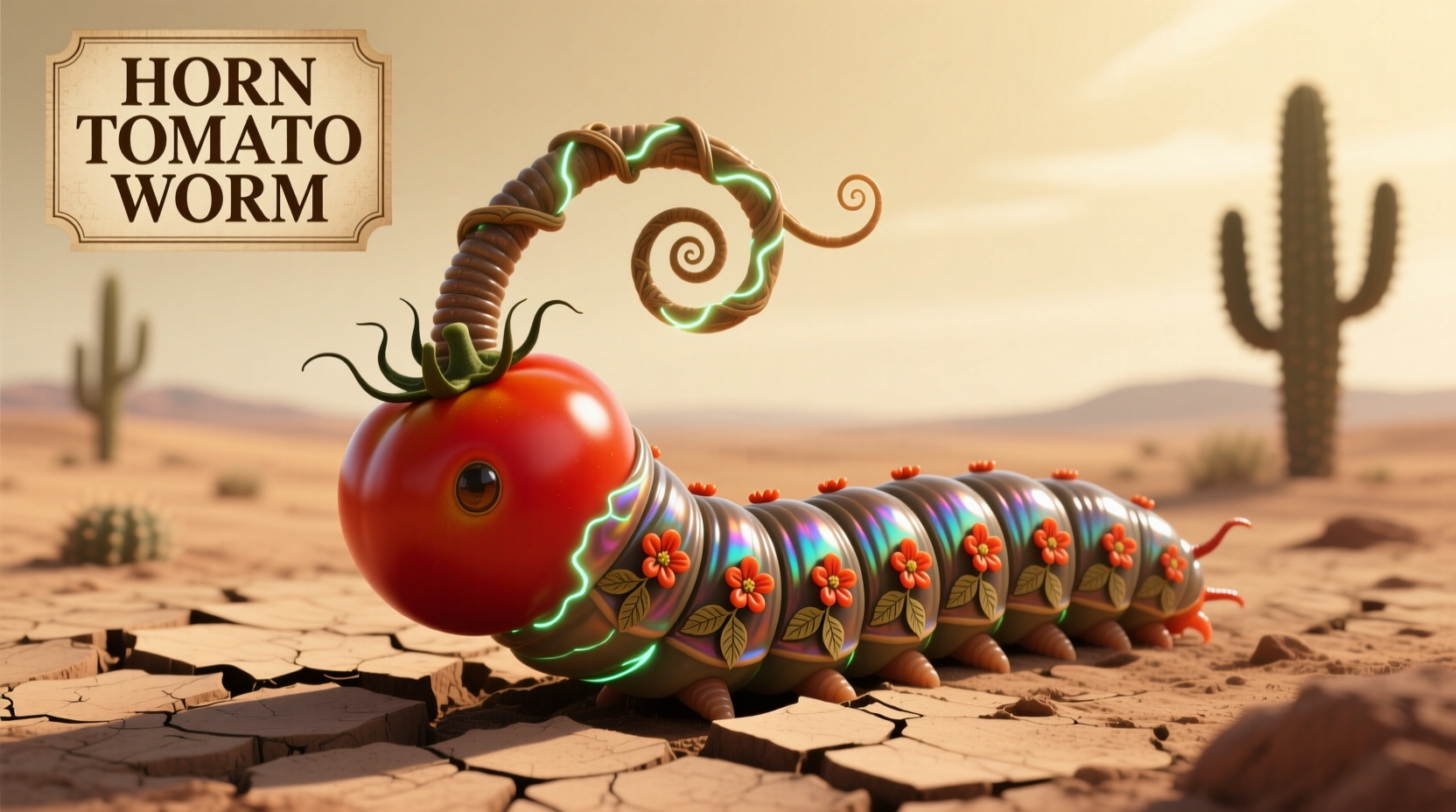Stop Tomato Hornworms Before They Destroy Your Garden
Nothing ruins a gardener's summer faster than discovering your prized tomato plants stripped bare. If you've spotted large green caterpillars with white V-shaped markings devouring your tomatoes, you're dealing with tomato hornworms. These pests can consume an entire plant in just days, but with the right approach, you can eliminate them quickly and protect your harvest.
Spot the Culprit: Instant Identification Guide
When you see defoliation on your tomato plants, immediate identification determines your next steps. Tomato hornworms are unmistakable once you know what to look for:
- Size: Up to 4 inches long (the largest garden caterpillar you'll encounter)
- Color: Bright green with eight white V-shaped markings along each side
- Horn: Distinctive black or red horn on the rear end
- Droppings: Large, dark green frass (droppings) on leaves below

| Feature | Tomato Hornworm | Tobacco Hornworm |
|---|---|---|
| White Markings | V-shaped | Diagonal stripes |
| Horn Color | Black | Red |
| Primary Host Plants | Tomatoes | Tobacco, tomatoes |
| Geographic Range | North America | Southern US, Mexico |
Assess the Damage: Is Your Crop Salvageable?
Not all infestations require emergency action. Evaluate your situation before choosing your control method:
- Mild infestation: 1-2 hornworms per plant with less than 25% defoliation
- Moderate infestation: Multiple hornworms with 25-50% leaf loss
- Severe infestation: Complete defoliation with fruit damage
According to the University of Minnesota Extension, tomato plants can recover from up to 50% defoliation if the growing season is still active. Beyond this threshold, fruit production significantly decreases.
Immediate Action Plan: Eliminate Hornworms Today
Follow this step-by-step protocol based on your infestation level:
For Mild Infestations (1-2 hornworms per plant)
- Hand-picking method: Wear gloves and remove caterpillars by hand (drop in soapy water)
- Timing: Early morning or dusk when hornworms are most active
- Frequency: Check plants daily for 7 days, then twice weekly
For Moderate Infestations (multiple hornworms)
- Biological control: Apply Bacillus thuringiensis (Bt) spray to affected plants
- Application: Evening application for maximum effectiveness
- Follow-up: Reapply after rain or every 5-7 days until infestation ends
For Severe Infestations (complete defoliation)
- Stronger intervention: Use spinosad-based insecticides as a last resort
- Safety window: Wait 3 days before harvesting treated plants
- Preventative measure: Install floating row covers after treatment
Understanding the Hornworm Life Cycle: Break the Pattern
Preventing future infestations requires understanding their development timeline:
Spring: Adult moths (hawk moths) emerge from pupae in soil
May-June: First generation moths lay eggs on tomato leaves
June-July: First generation caterpillars feed and mature
July-August: Second generation emerges (most damaging)
Fall: Mature caterpillars burrow into soil to overwinter
The Oregon State University Extension notes that understanding this cycle helps target interventions when hornworms are most vulnerable - during early larval stages before they cause significant damage.
Prevention Strategies for Next Season
Stop hornworms before they start with these proven techniques:
- Companion planting: Basil, marigolds, and borage repel adult moths
- Soil preparation: Till soil in fall and spring to expose overwintering pupae
- Natural predators: Attract braconid wasps by planting dill, parsley, and sweet alyssum
- Physical barrier: Use floating row covers from transplanting until flowering
Research from Penn State Extension shows that integrated pest management combining multiple prevention methods reduces hornworm populations by up to 80% compared to single-method approaches.
When to Worry: Recognizing Treatment Failure
Most control methods work within 48 hours. Watch for these warning signs that indicate your approach isn't working:
- New defoliation appearing 72 hours after treatment
- Fresh frass on lower leaves
- Increased bird activity (they're hunting hornworms you've missed)
- Visible eggs on undersides of leaves
If you see these signs, switch to a different control method immediately. The University of Illinois Integrated Pest Management program recommends rotating between biological and chemical controls to prevent resistance.
Common Mistakes That Make Hornworm Problems Worse
Avoid these counterproductive practices that actually increase hornworm damage:
- Using broad-spectrum insecticides that kill beneficial wasps
- Watering in the evening (creates ideal conditions for moth activity)
- Over-fertilizing with nitrogen (produces tender leaves hornworms prefer)
- Ignoring small caterpillars (they double in size daily)
Final Thoughts: Sustainable Hornworm Management
Successful tomato hornworm control balances immediate action with long-term prevention. Focus on integrated pest management rather than complete eradication - a few hornworms won't destroy your crop, and their natural predators need some presence to remain in your garden. By implementing these strategies, you'll protect your tomatoes while maintaining a healthy garden ecosystem.











 浙公网安备
33010002000092号
浙公网安备
33010002000092号 浙B2-20120091-4
浙B2-20120091-4